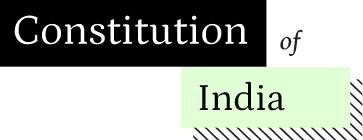In fact, in the Appendix, Shri Alladi has stated that he differed from the majority of the Drafting Committee and he has stated that in his opinion the new scheme of division of powers between Parliament and the Legislatures of the states should be as is given in this amendment. The amendment of which notice was given by the Honourable Mr. K. Santhanam was on the lines of the suggestion made by Shri Alladi in the Appendix. I suggest that the matter is of vital importance, on which one of the most eminent jurists of the country has differed from the Drafting Committee, and the article should not be allowed to be passed by the House without due consideration. I therefore thought it my duty to move this amendment. I would have preferred if Mr. Santhanam had himself moved it. I do feel that the House is entitled to know why the suggestion made by Shri Alladi could not be followed. The suggestion made by Shri Alladi is a very important one. In fact, the Draft Constitution only reproduces word for word Section 100 of the Government of India Act, 1935. In the Appendix, Shri Alladi has given arguments to show why the change he has suggested is necessary. He has stated that at the time the Government of India Act was passed, it was not decided as to where the residuary powers should vest, whether they should be with the provinces or with the Centre. Therefore, it was necessary to frame the section in the form in which it was framed. He has also pointed out that much litigation has been carried on, on the meaning of the word “notwithstanding”, in the Federal Court. He has also stated, as it has been decided finally that the residuary powers shall belong to the Centre, the article should be redrafted in a different manner, in the manner he has suggested and as is given in my amendment. Firstly, we should not copy word for word, the Government of India Act, 1935, which was a deed of our slavery. Now that we are now framing a new Constitution, we should not merely incorporate everything word for word from the old Constitution. One advantage of this is that we will not be reminded of our past slavery as we would be by copying, word for word, Section 100 of the Government of India Act, 1935. Secondly, Sir, this is a more logical form to say that the various States shall have exclusive power to make laws in relation to matters falling within the classes of subjects specified in List I, and that List II shall contain subjects in which both the States and the Union shall have concurrent power to make laws, and then to say that whatever remains shall belong to the Union. List I at present gives the powers of the Union Parliament. Shri Alladi has suggested that whatever is contained in the Union List should be by way of illustration only and that whatever remains should belong to the Centre. The more logical form will be to say that such and such powers will belong to the States, such and such powers will belong both to the States and the Union and then to say that whatever remains shall belong to the Union. This kind of division given by Shri Alladi is a more logical division and a much better division in every way. The suggestion made by him is a very important one and the House should take note of the reasons why he prefers this arrangement to the Draft which only copies Section 100 of the Government of India Act. The Drafting Committee itself says on page 100 of the Draft Constitution-
“Shri Alladi Krishnaswami Ayyar was of opinion that instead of following the old plan of legislative distribution this clause might, in view of the fact that the residuary power is to be in Parliament begin with the legislative power of the States, then deal with the concurrent powers and then with the legislative powers of Parliament. As the question was merely one of form, the majority of the members preferred not to disturb the existing arrangement.“
